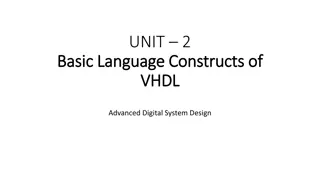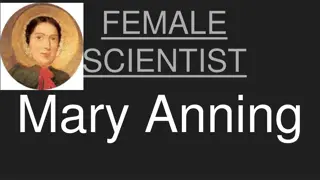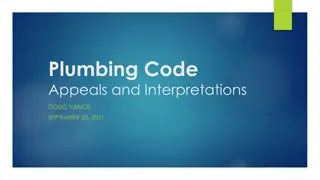The Impact of No Code-Low Code on Startup Innovation
In the vibrant world of startups, innovation is the cornerstone of success. As these businesses aim to carve out their niches, they often face a common hurdle: the extensive resources required for traditional software development. However, the emergence of low code no code (LCNC) platforms is revolu
2 views • 12 slides
Understanding the Structure and Function of Exoskeletons in Animals
An exoskeleton is an external skeleton made of chitin and other substances that supports and protects various animals, such as insects and crustaceans. This rigid or articulated envelope does not grow with the animal, requiring molting to shed the old exoskeleton for a new one. The structure include
0 views • 24 slides
Exploring the Human Skeletal System
The skeletal system is crucial for protecting organs, providing structure for movement, storing minerals, and producing blood cells. It consists of the axial and appendicular skeleton, with bones classified into long, short, flat, and irregular shapes. Long bones, such as the femur, play a key role
2 views • 28 slides
Improving Code Analysis Workflow with Jenkins, Sonar, and Gerrit
Enhance code analysis processes by analyzing source code before merging, enabling analysis in branches, and triggering Jenkins jobs. Sonar.cloud provides options to analyze branches using Maven build, while the proposal suggests using Jenkins plugin for code review. Addressing challenges with Gerrit
1 views • 12 slides
Understanding Basic Language Constructs of VHDL for Advanced Digital System Design
This content delves into the fundamental aspects of VHDL programming, covering topics such as skeleton syntax, entity declaration, port declaration, and architecture body. It explores the structure of VHDL programs, elements, data types, signal assignments, and the difference between combinational a
0 views • 19 slides
Understanding Osteology: An Overview of Bone Structures and Skeleton Composition
Osteology is the study of anatomical structures such as bones, cartilages, and the skeleton that support and protect the body. It includes the classification of bones based on shape and function, details on bones of the thoracic and pelvic limbs, and the divisions of the skeleton into axial, appendi
0 views • 15 slides
Understanding Anatomy: Branches and Components of the Human Body
Anatomy, the study of body tissue structures, encompasses various branches including Gross Anatomy, Systematic Anatomy, and Microscopic Anatomy. Osteology focuses on the skeleton's components and functions as a crucial support system for the body, aiding in movement and protection of organs.
5 views • 12 slides
Overview of Magisterial Appeals and Processes in the Court of Appeal
Presentation of cases before the Court of Appeal, focusing on Justice of Appeal Prakash Moosai. Magisterial appeals against magistrate decisions are guided by specific grounds under the Summary Courts Act. Proper procedures like giving notice of appeal and obtaining instructions are essential. The C
0 views • 21 slides
Understanding Binary Coded Decimal (BCD) and Excess-3 Code
Binary Coded Decimal (BCD) is a binary code used to represent decimal numbers, with the popular 8421 BCD code and its conversion process explained. Additionally, Excess-3 Code, another BCD code, is detailed with an example of finding its code for a given decimal number. Different BCD codes like 4221
0 views • 11 slides
A New Complaint Handling Code for the Sector - Webinar Highlights
This webinar discusses the introduction of a new Complaint Handling Code for the sector, aiming to address issues in social housing complaint processes. It covers key points, the background leading to the code's development, the Ombudsman's experience, and the code's aims and framework towards high-
0 views • 14 slides
The Board of Taxation Voluntary Tax Transparency Code Overview
The Board of Taxation developed a voluntary Tax Transparency Code to address community concerns and promote greater tax transparency among large businesses. The Code outlines recommended disclosures for both large and medium businesses, encouraging adoption of higher disclosure standards. Internatio
0 views • 20 slides
Simplifying AI Development with Low-Code and No-Code Platforms
Explore the world of low-code and no-code AI development platforms, empowering experts to create applications with ease. Learn about the benefits, tools, and components of these innovative platforms, and discover popular AI tools for no-code development. Accelerate your digital transformation journe
0 views • 11 slides
Understanding Pseudo Code and Flow Charts for Algorithm Analysis
Explore the concepts of pseudo code and flow charts for analyzing algorithms, problem-solving, and understanding space and time complexity. Learn about basic elements of pseudo code, assigning operations, and writing effective pseudo code statements in a clear and structured manner. Discover the imp
0 views • 26 slides
Summer Football Activities By-law Review
A review of By-law 3.157 regulating high school football activities during the summer contact days. The by-law sets limits on full contact and specifies acceptable levels of contact such as Air, Bags, Wrap, and Thud drills. It also outlines allowable activities like 7 on 7 pass skeleton games with t
0 views • 13 slides
Enhancing Code Status Discussions in End-of-Life Care: A Quality Improvement Project
This project led by Dr. John Rutkowski aims to reduce inappropriate interventions for patients with DNR or Modified Code Status by implementing an improved code status documentation system. Data analysis reveals a need for better documentation practices, and survey responses highlight various challe
0 views • 18 slides
Introduction to Basic Programming Concepts
Explore the fundamentals of programming with topics including skeletons, printing to the screen, variables, and user input. Understand the importance of skeleton programs and learn how to structure your code effectively. Get insights into essential practices such as naming conventions, entry points,
0 views • 45 slides
Exploring the Human Body: An Illustrated Guide
Discover the intricacies of the human body through detailed illustrations showcasing various body parts and systems such as the face, limbs, muscle-skeleton system, and respiratory system. Each image provides a comprehensive view of different anatomical structures, from the head to the foot, offerin
0 views • 31 slides
Understanding the Human Skeletal System
Explore the functions of the skeletal system, learn about the various types and main bones, understand the importance of bone health, and discover the divisions of the skeleton - axial and appendicular. Dive into the intricacies of bone structure, functions, and how bones support, protect, and enabl
0 views • 12 slides
Exploring Human Bones: An Introduction to the Skeletal System
In this unit, you will delve into the fascinating world of human bones. From the skull to the legs, discover the vital roles each bone plays in our body. Learn about the human skeleton, identify important bones, and understand the functions of key body parts. Engage with interactive activities and b
0 views • 10 slides
Efficient Dynamic Skinning with Low-Rank Helper Bone Controllers
This research explores efficient dynamic skinning methods using low-rank helper bone controllers to achieve robust, simple, and high-performance skin deformation in computer graphics. By investigating linear blend skinning techniques and helper bone rigs, the study aims to address the wishlist of ga
0 views • 29 slides
Overview of Appendicular Skeleton and Bones by Dr. Mahdi H. Hammadi, PhD, Sc. Clinical Physiology
Dr. Mahdi H. Hammadi, PhD, Sc. in Clinical Physiology, provides an insightful look into the bones of the appendicular skeleton, including the shoulder girdle, upper limbs, wrist bones, and hand bones. The text covers the composition and functions of these skeletal elements in a comprehensive manner,
0 views • 21 slides
The Three Modules of Phonology and Multiple-Module Spell-Out Systems
Phonology is structured into three modules - Sonority, Laryngeal, and Place - each with its own vocabulary and skeleton for computation. These modules interact in multiple-module spell-out systems to map linguistic structures onto phonetic realizations. Sonority, involving the audibility of linguist
0 views • 67 slides
Understanding the .NET Architecture Components
The .NET architecture comprises various key components such as the Common Language Specification, Code Manager, Managed Code, Unmanaged Code, and Native Code. These components play crucial roles in the development and execution of applications within the .NET framework. Managed code is executed by t
0 views • 21 slides
Challenges in Code Search: Understanding, Matching, and Retrieval
Programming can be challenging due to the lack of experience and unfamiliar libraries. Code search engines struggle with representing complex tasks, while information retrieval techniques aim to bridge the gap between source code and natural language queries. The mismatch between high-level intent a
0 views • 21 slides
Understanding the Anatomy of the Skeletal System
Explore the two major sections of the skeletal system: the Axial Skeleton, which provides protection to vital organs, and the Appendicular Skeleton, enabling movement. Discover variations in bone structure across species, from horses to dogs, and delve into the bones of the Axial Skeleton, including
0 views • 29 slides
Understanding the Regional Anatomy of the Body: A Kinesiology Perspective
Explore the intricacies of the human body's skeletal structure through a regional approach as outlined in kinesiology books. Delve into the axial and appendicular skeleton, facial muscles, skull anatomy, importance of wearing a helmet, facial bones, back region, and the vertebral column. Learn about
0 views • 12 slides
Understanding the Axial and Appendicular Skeleton in Vertebrates
The axial skeleton consists of the bones in the head and trunk, while the appendicular skeleton supports the limbs in vertebrates. The appendicular skeleton aids in locomotion and manipulation, comprising 126 bones in total. Understanding the structure and functions of these skeletal systems is vita
0 views • 23 slides
Understanding the Musculoskeletal System in the Human Body
The musculoskeletal system, comprising the muscular and skeletal systems, supports body movement, stability, and shape. It includes muscles, bones, tendons, ligaments, and joints. This system serves functions like providing support, protection to vital organs, mediating movement, and producing blood
0 views • 36 slides
Software Quality and Source Code Management Best Practices
Effective source code management is crucial for software quality assurance. This involves locking down code, baselining milestones, managing code variants, and ensuring traceability. Software Configuration Management (SCM) is key, encompassing configuration items and core concepts like creating base
0 views • 34 slides
Exploring Mollusks and Echinoderms
Delve into the fascinating world of Mollusks and Echinoderms through this informative review. Learn about their unique characteristics such as radula, tube feet, gills, and bilateral symmetry. Discover the importance of these features in the diverse phyla of Mollusca and Echinodermata, including the
0 views • 25 slides
Discovering Mary Anning: The Fossil Hunter's Legacy
Mary Anning, a pioneering female scientist born in 1799, made groundbreaking discoveries in paleontology, including finding the complete skeleton of a Plesiosaurus. Despite facing challenges such as financial strain and battling breast cancer, her contributions to science are celebrated through awar
0 views • 12 slides
Multi-Label Code Smell Detection with Hybrid Model based on Deep Learning
Code smells indicate code quality problems and the need for refactoring. This paper introduces a hybrid model for multi-label code smell detection using deep learning, achieving better results on Java projects from Github. The model extracts multi-level code representation and applies deep learning
0 views • 10 slides
Overview of CAIN Particle Tracking Code for High-Energy Colliders
CAIN is a particle tracking code used for high-energy collider simulations since 1984. Initially named ABEL, it evolved to include beam-laser interactions for gamma-gamma colliders. The code, written in FORTRAN 90, handles beam-beam and external fields, with a structure where all particles are store
0 views • 17 slides
Instant Radiosity: Compilation and Screenshots
Learn how to compile and run skeleton code for Instant Radiosity. Follow a step-by-step guide for setting up the building environment using CMake-GUI and compile the code successfully. Capture and share screenshots displaying different Virtual Point Lights (VPLs) post-compilation.
0 views • 21 slides
Exploring Human Skeleton Anatomy: Bones, Structure, and Functions
Delve into the intricate details of the human skeleton, including the organization of bones in the axial and appendicular skeletons. Learn about the different bones comprising the skeletal system, their functions, and the significance of memorizing 144 bones. Discover learning objectives related to
0 views • 8 slides
Liquid Metal Coolant Connections to DCLL Blanket Diagrams
Explore detailed diagrams illustrating the coolant connections to the Dual Coolant Lead-Lithium (DCLL) blanket in a fusion reactor design. The layouts show the arrangement of liquid metal coolant ducts in the skeleton ring, transition from the skeleton ring to the blanket, and a basic maintenance co
0 views • 8 slides
Understanding the Structure and Function of the Heart
Explore the intricate details of the heart, including its chambers, external features, myocardium, valves, and fibrous skeleton. Delve into the layers of the heart wall, the pericardium, and the fibrous skeleton. Learn about the different layers of the myocardium in the atria and ventricles, as well
0 views • 27 slides
Lazy Code Motion and Partial Redundancy Elimination in Optimizing Compiler
Lazy code motion, partial redundancy elimination, common subexpression elimination, and loop invariant code motion are optimization techniques used in compilers to improve code efficiency by eliminating redundant computations and moving code blocks to optimize performance. These techniques aim to de
0 views • 35 slides
Unleash the Power of JavaScript Slot Machine Code for Your Online Casino (1)
Learn how to create captivating online slot machines with JavaScript Slot Machine Code, Casino game code, Casino game HTML code, HTML5 casino games source code, Slot machine JavaScript for your platform.\n\nKnow more>>\/\/ \/javascript-slot-machine-c
0 views • 4 slides
Plumbing Code Appeals and Interpretations Overview
This document provides information on the agenda, upcoming professional development events, Building Code Appeal Board, Appeal Board decisions, Code Interpretation Committee, code interpretations, and final thoughts related to plumbing code appeals and interpretations. It covers the appeal process,
0 views • 8 slides






































